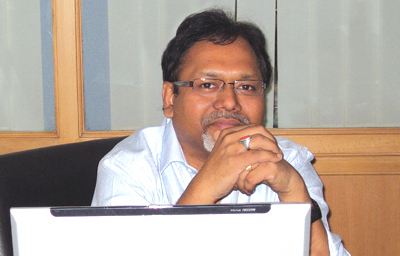INDIAN ARMED FORCES CHIEFS ON OUR RELENTLESS AND FOCUSED PUBLISHING EFFORTS

The insightful articles, inspiring narrations and analytical perspectives presented by the Editorial Team, establish an alluring connect with the reader. My compliments and best wishes to SP Guide Publications.

"Over the past 60 years, the growth of SP Guide Publications has mirrored the rising stature of Indian Navy. Its well-researched and informative magazines on Defence and Aerospace sector have served to shape an educated opinion of our military personnel, policy makers and the public alike. I wish SP's Publication team continued success, fair winds and following seas in all future endeavour!"

Since, its inception in 1964, SP Guide Publications has consistently demonstrated commitment to high-quality journalism in the aerospace and defence sectors, earning a well-deserved reputation as Asia's largest media house in this domain. I wish SP Guide Publications continued success in its pursuit of excellence.
- The layered Air Defence systems that worked superbly, the key element of Operation Sindoor
- Operation Sindoor | Day 2 DGMOs Briefing
- Operation Sindoor: Resolute yet Restrained
- India's Operation Sindoor Sends a Clear Message to Terror and the World – ‘ZERO TOLERANCE’
- Japan and India set forth a defence cooperation consultancy framework, talks on tank and jet engines
A Word from Editor

Even as the Indian Air Force races to fill in the blanks in its arsenal and force levels, the civil aviation sector can only hope for some succour—however mild—from the state
Caught in the cross-currents of metamorphic transformation and cataclysmic depletion in force levels, the Indian Air Force (IAF) is faced with the crucial question as to whether its current force levels, combat support equipment and infrastructural capabilities suffice and do full justice to its enhanced responsibilities and roles. “It would be most desirable to not only restore the strength of the combat fleet to the authorised level of 39.5 squadrons but even to further build it up to 42 squadrons to cater for enhanced responsibilities in the future,” Air Marshal P.K. Barbora, the newly appointed Vice Chief of Air Staff, says in an exclusive interview.
Acquisitions, with special emphasis on the immediate requirements of the IAF, form the crux of the cover story. Blanks exist in practically all areas of desired capabilities. Be it strategic airlift or all-weather, day-and-night, precision attack capability or ground-based air defence—there is deficiency in almost all areas. On top of the shopping list is an urgent need for at least six more Flight Refueller Aircraft, three more Airborne Warning and Control System, four more Aerostats and greater number of Heron Unmanned Aerial Vehicles.
Talking of acquisitions, the pros and cons of India’s abiding interest in the Su-30MKI have been elaborately and astutely discussed by Air Marshal (Retd) V.K. Bhatia and Air Marshal (Retd) B.K. Pandey. There is no denying India’s benevolence towards Russia, a reliable and decades-old friend, in finalising the Su-30 deal in 1996, at a time when the Russian military aviation industry was on the brink of collapse, with no fresh orders forthcoming from even its own air force let alone foreign customers. Yet, in the Su-30MKI, the IAF not only received a world class air-dominance fighter but also, a formidable multi-role strike platform. So irrespective of whether India sealed the deal as a ‘friendly’ overture to help bailout Russia’s ailing defence industry, it was not without substantial gain.
Moving away from military matters, storms continue to buffet the civil aviation sector. Following a meeting with Civil Aviation Minister Praful Patel, private airlines are now awaiting fulfillment of the assurances from the government. Broaching the airlines’ concerns to the Cabinet, Civil Aviation Minister Praful Patel had pointed out, “A Rs 1,000 change in ATF price translates into a Rs 300 crore increase or decrease in the cost of operations.” That, further inflated by the sales tax imposed by states, have compounded the woes of the private airline operators who are now looking to the Group of Ministers constituted by the Prime Minister to push through an uniform sales tax applicable across the length and breadth of the country, besides other reforms.
Turn the pages to get all the action, and more.





